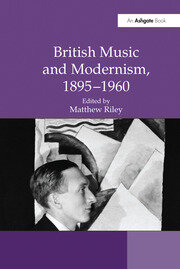Author: Laurel Parsons
Publication details: “Early Music and the Ambivalent Origins of Elisabeth Lutyens’s Modernism.” British Music and Modernism, 1895–1960. Edited by Matthew Riley. Aldershot: Ashgate, 2010.
Weblink: www.taylorfrancis.com

Abstract: The English imagination takes the form of a ring or circle. It is endless because it has no beginning and no end; it moves backwards as well as forwards. On 1 December 1933, the young English composer Elisabeth Lutyens heard the music of Webern for the first time. This chapter examines that ambivalence, first by tracing its origins in her character and family background, and then by exploring her interest in early music during the 1920s and 1930s. It analyses extracts from Lutyens’s Five-Part Fantasia for Strings (1937), a work which unmistakably alludes to Purcell’s string fantasias, yet in a musical language that is not only atonal but, it argues, proto-serial. Through Lytton relatives who lived in France, Lutyens met and was quickly besotted with the 17-year-old Antoine Geoffroy-Dechaume, a gifted young organist and harpsichordist who would go on to become one of France’s preeminent early-music scholars.